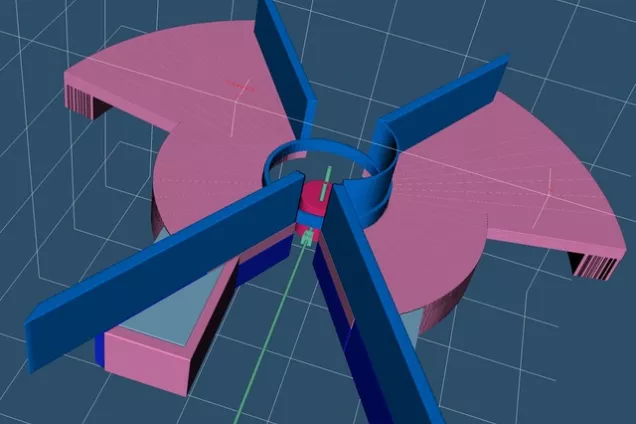Fundamental Physics at ESS
We are working towards establishing a research program in fundamental physics at ESS together with colleagues. Our interest is primarily in neutrino physics at low energies, but we are also involved in exploring the possibilities for a long-baseline neutrino oscillation experiment.
When the ESS linear accelerator reaches its nominal power it will be the primary high-intensity proton machine in the world. Due to the reactions that take place in the spallation target, e.g. pion production, the machine produces a significant flux of pulsed low-energy neutrinos already in its default layout without any additional investments in the accelerator itself. A first step towards a neutrino physics program at ESS, with minimal interference with the neutron scattering program, can therefore be accomplished by positioning dedicated detectors in the area around the existing spallation target.
We are pursuing different ideas in this direction, including coherent elastic neutrino-nucleus scattering and neutrino-nucleus cross-sections measurements of interest for the neutrino wind in supernovae as well as for supernova neutrino detection. We also look at the potential to investigate physics beyond the standard model, e.g. the possible existence of sterile neutrinos. Concerning a coherent elastic neutrino-nucleus scattering program, the aim is to use this rather recently observed phenomenon as a tool for fundamental physics. This is possible by using several different atomic nuclei as targets, since the weak charge depends in leading order on the number of neutrons in the target nucleus (with the corresponding proton term being reduced by ca 95% due to the value of the Weinberg angle). This also makes it possible to use this effect as a tool to study the neutron distribution in the nucleus. Information of interest can also be extracted if the recoil spectrum is measured. An overview including some of these cases, as well as others, can be found in the paper linked on the right hand side of this page.
We also work in an exploratory study to investigate the possibilities to measure the CP-violating phase, δ-CP, in the PMNS-matrix in a long-baseline neutrino oscillation experiment. This phase may be of importance for understanding the observed matter-antimatter asymmetry in the universe. Our responsibility in this project has been the design of a water-cherenkov near detector and to setup simulation and analysis software and explore the physics reach of such a facility. More information about the ESSnuSB project can be found in the conceptual design report on the right hand side of this page.



